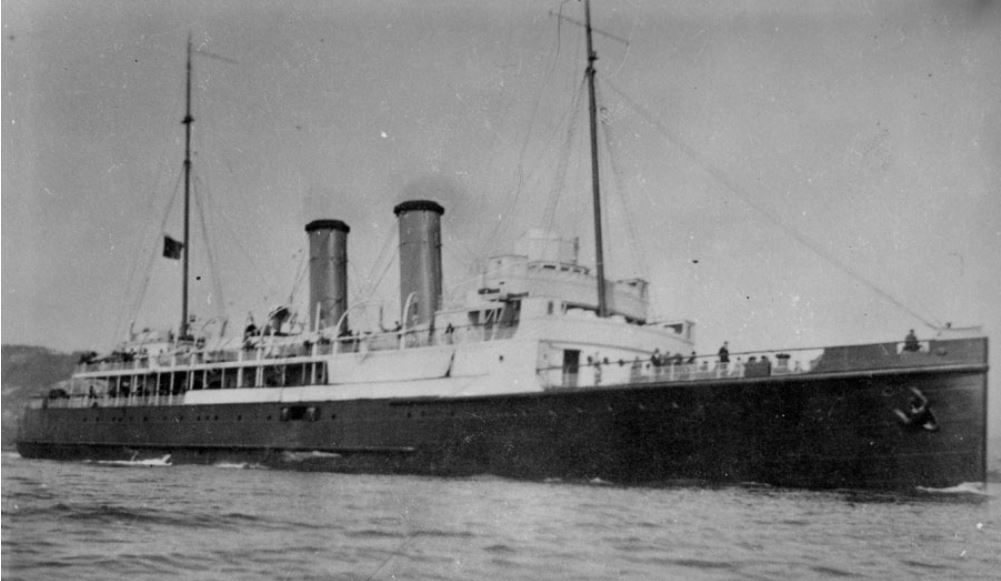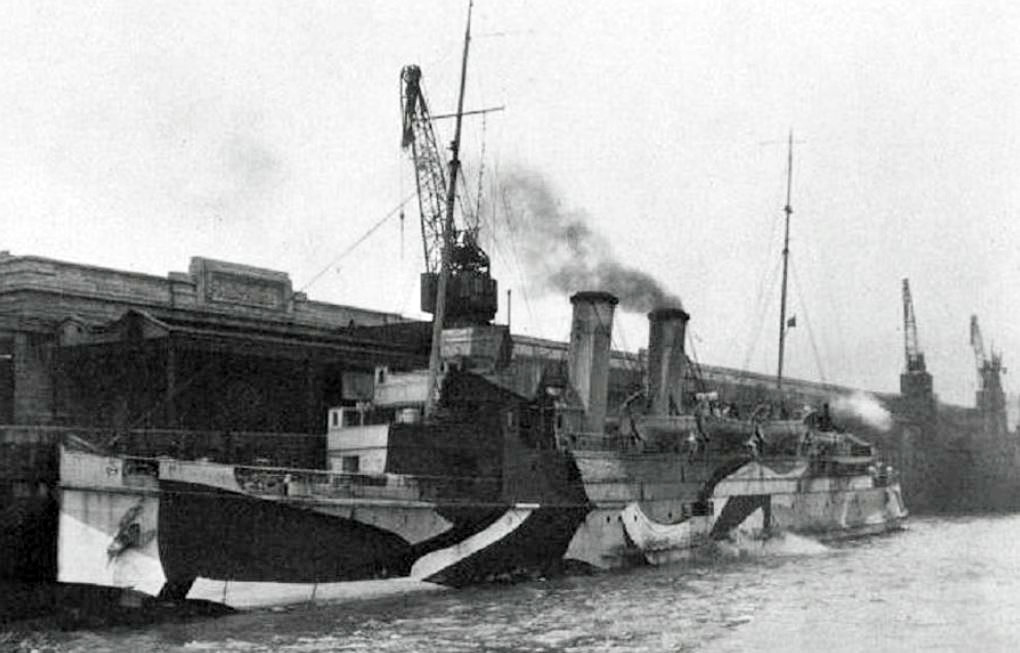Difference between revisions of "HS Ville de Liege"
From Our Contribution
| Line 1: | Line 1: | ||
| − | |||
| − | |||
| − | |||
| − | |||
| − | |||
| − | |||
| − | |||
| − | |||
| − | |||
| − | |||
| − | |||
| − | |||
{{Infobox ship | {{Infobox ship | ||
| image = [[File:HS_Ville_de_Liege.jpg]] | | image = [[File:HS_Ville_de_Liege.jpg]] | ||
| caption = | | caption = | ||
| − | | image2 = [[File:.jpg]] | + | | image2 = [[File:HS_Ville_de_Liege_1.jpg]] |
| caption2 = | | caption2 = | ||
| shipname = HS Ville de Liege | | shipname = HS Ville de Liege | ||
| − | | shipowner = | + | | shipowner = Belgium Marine Administation |
| shipbuilder = Cockerill's of Hoboken, Belgium | | shipbuilder = Cockerill's of Hoboken, Belgium | ||
| shipyardnumber = | | shipyardnumber = | ||
| shiplaunched = 1914 | | shiplaunched = 1914 | ||
| − | | shipcompleted = | + | | shipcompleted = January 1914 |
| − | | shipinservice = | + | | shipinservice = |
| shipoutofservice = | | shipoutofservice = | ||
| shipinservice2 = | | shipinservice2 = | ||
| shipoutofservice2 = | | shipoutofservice2 = | ||
| shipreclassified = | | shipreclassified = | ||
| − | | shipID = | + | | shipID = GQDS |
| − | | shipfate = | + | | shipfate = Broken up 1951 |
| shiptype = Cross Channel steamer | | shiptype = Cross Channel steamer | ||
| shiptonnage = 1,365 tons | | shiptonnage = 1,365 tons | ||
| − | | shiplength = | + | | shiplength = 300 ft (91.44m) |
| − | | shipbeam = | + | | shipbeam = 36 ft (10.97m) |
| − | | shipdepth = | + | | shipdepth = 14.6 ft (7.0m) |
| − | | shippropulsion = | + | | shippropulsion = Triple screw |
| shipspeed = 21 knots (38089 km/h) | | shipspeed = 21 knots (38089 km/h) | ||
| − | | shipcapacity = | + | | shipcapacity = 900 passengers, later 200 passengers and 60 cars. |
}} | }} | ||
==Remarks== | ==Remarks== | ||
| − | + | Not long after World War I (1914-1918) was declared she was commandeered for war service as a troop carrier. In May 1917 she was loaned to the British who converted her into a hospital ship, completing 252 crossings between 21 Jun 1917 and 31 Dec 1918. | |
| − | |||
| − | Not long after World War I (1914-1918) was declared she was commandeered for war service as a troop carrier. | ||
| − | Following the declaration of Peace, she was the first Belgium ship to return Belgium expatriates to their homeland. The little ship was then returned to Belgian State Railways for the service between Dover and Ostend. On 11 | + | Following the declaration of Peace, she was the first Belgium ship to return Belgium expatriates to their homeland. The little ship was then returned to Belgian State Railways for the service between Dover and Ostend. On 11 Feb 1929, the ''Ville de Liege'', sank in Dover harbour. However, she was able to be salvaged and later returned to her cross channel task. In 1936 she was to be retired. but instead was turned into a car ferry, commencing July 1936 now named ''SS London-Istanbul''. |
| − | During WW2 she was again commandeered, first as a Hospital Ship, then converted to be a minesweeper depot ship, before being used | + | Following the outbreak of war in 1939, she along withmost of Belgium's maitime fleet escaped to the UK. During WW2 she was again commandeered, first as a Hospital Ship, then converted to be a minesweeper depot ship, before being used in the Normandy landings in June 1944. |
| − | With peace, she again returned to the cross channel function | + | With peace, she again returned to her owners and the cross channel function until she was laid up in May 1949 in Oostende. From July - Septemeber 1949 she was chartered to provide a ferry service between Folkestone and Calais. In October 1950 she was towed to Anterp wher breaking commenced in 1951.. |
==Soldiers carried== | ==Soldiers carried== | ||
===France to England 8 August 1917=== | ===France to England 8 August 1917=== | ||
| − | *[[Gustaf Adolf Olson]] | + | * [[Gustaf Adolf Olson]] |
===France to England 6 November 1917=== | ===France to England 6 November 1917=== | ||
| − | *[[Robert Hastings Joyce]] | + | * [[Robert Hastings Joyce]] |
===France to England 10 December 1917=== | ===France to England 10 December 1917=== | ||
| − | *[[James Anthony Parker]] | + | * [[James Anthony Parker]] |
===France to England 31 December 1917=== | ===France to England 31 December 1917=== | ||
| − | *[[John Henry Ward]] | + | * [[John Henry Ward]] |
===France to England 1 April 1918=== | ===France to England 1 April 1918=== | ||
| − | *[[John Humphrey Coyle]] | + | * [[John Humphrey Coyle]] |
| − | *[[Arthur Thomas Orton MM]] | + | * [[Arthur Thomas Orton MM]] |
===England to France 9 April 1918=== | ===England to France 9 April 1918=== | ||
| − | *[[George Weston Firns]] | + | * [[George Weston Firns]] |
===France to England 27 April 1918=== | ===France to England 27 April 1918=== | ||
| Line 75: | Line 61: | ||
===France to England 3 May 1918=== | ===France to England 3 May 1918=== | ||
| − | *[[Ernest Camp]] | + | * [[Ernest Camp]] |
[[Category:Ships]] | [[Category:Ships]] | ||
Revision as of 14:52, 8 November 2021
Contents
Remarks
Not long after World War I (1914-1918) was declared she was commandeered for war service as a troop carrier. In May 1917 she was loaned to the British who converted her into a hospital ship, completing 252 crossings between 21 Jun 1917 and 31 Dec 1918.
Following the declaration of Peace, she was the first Belgium ship to return Belgium expatriates to their homeland. The little ship was then returned to Belgian State Railways for the service between Dover and Ostend. On 11 Feb 1929, the Ville de Liege, sank in Dover harbour. However, she was able to be salvaged and later returned to her cross channel task. In 1936 she was to be retired. but instead was turned into a car ferry, commencing July 1936 now named SS London-Istanbul.
Following the outbreak of war in 1939, she along withmost of Belgium's maitime fleet escaped to the UK. During WW2 she was again commandeered, first as a Hospital Ship, then converted to be a minesweeper depot ship, before being used in the Normandy landings in June 1944.
With peace, she again returned to her owners and the cross channel function until she was laid up in May 1949 in Oostende. From July - Septemeber 1949 she was chartered to provide a ferry service between Folkestone and Calais. In October 1950 she was towed to Anterp wher breaking commenced in 1951..

